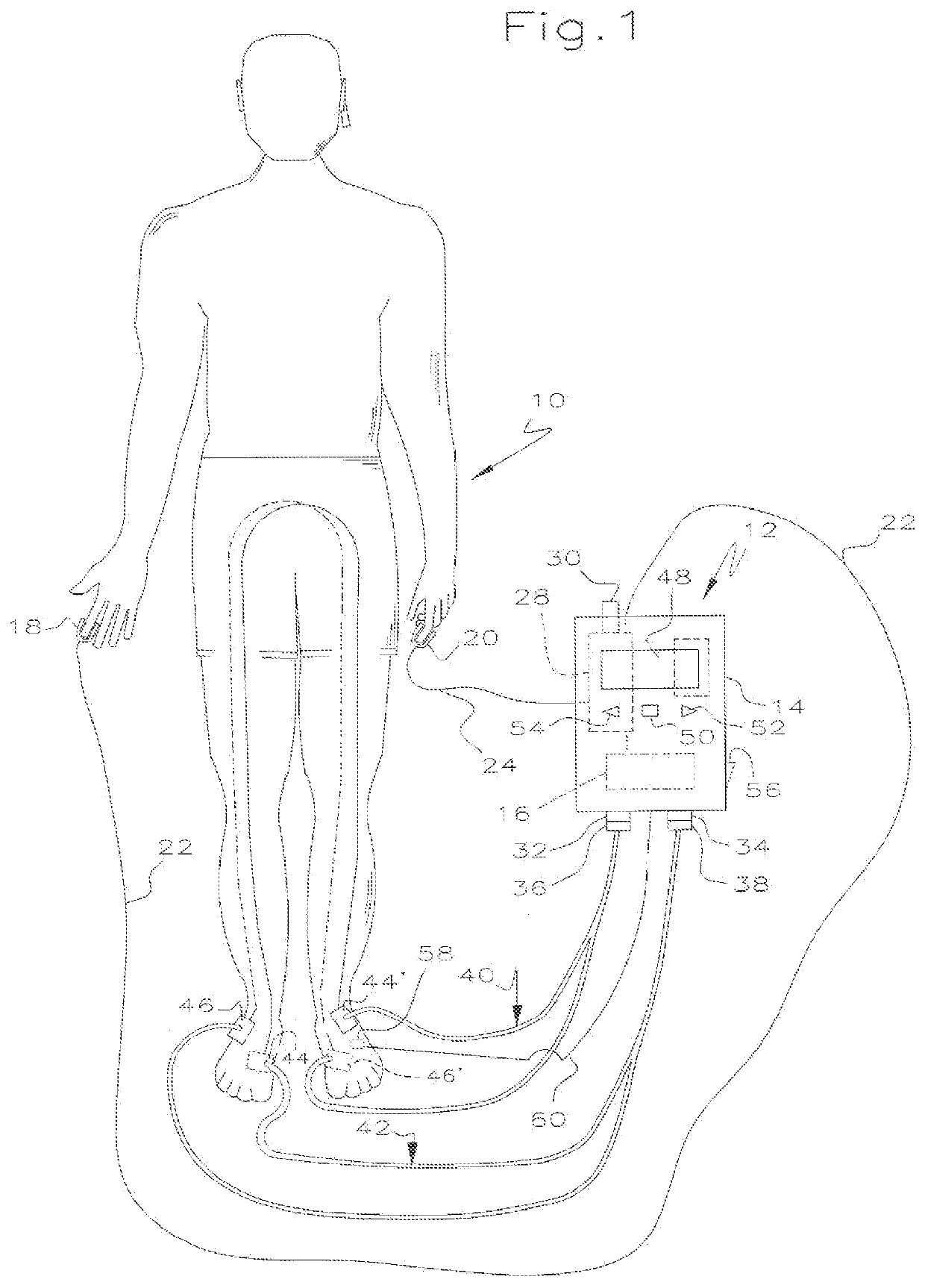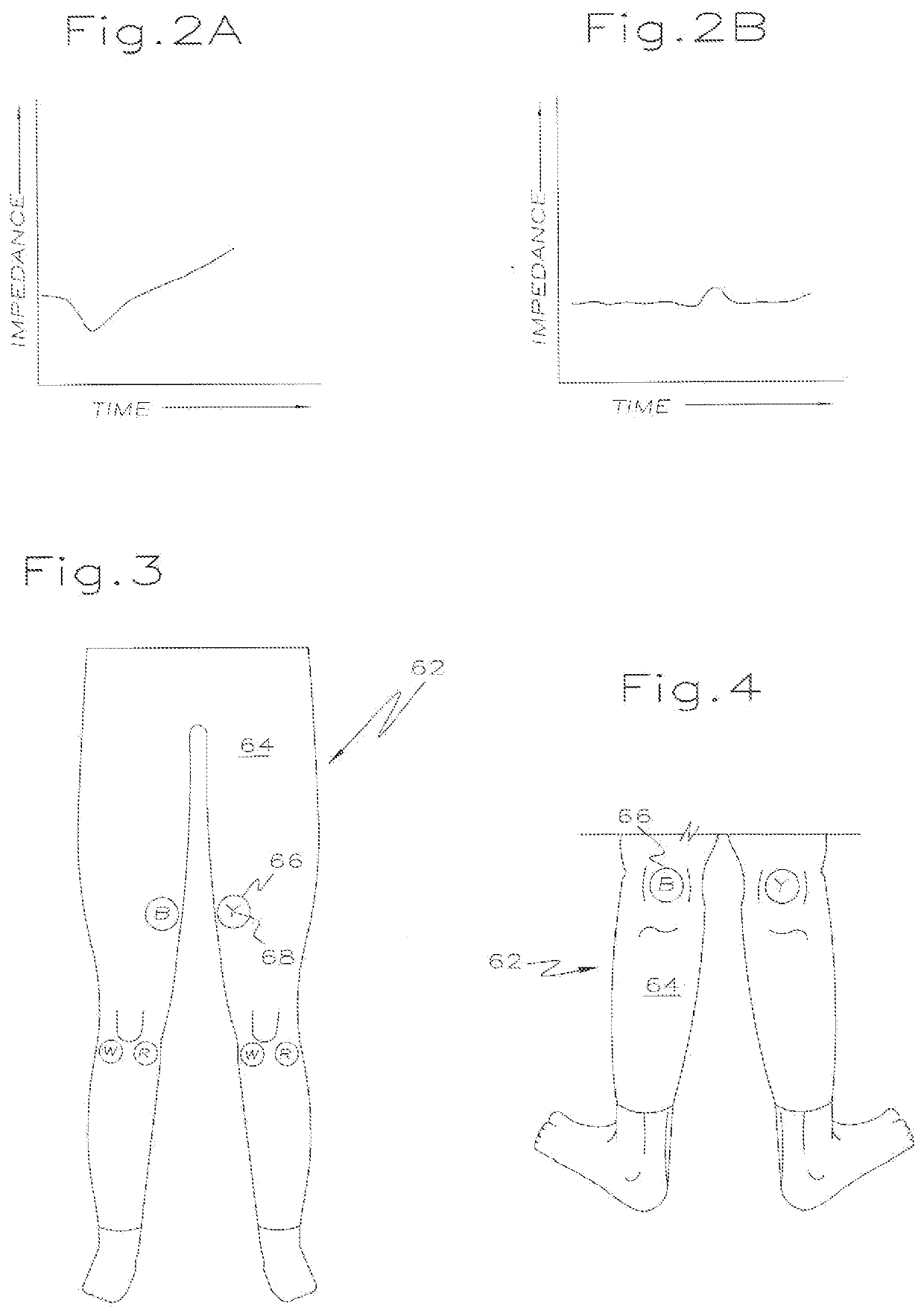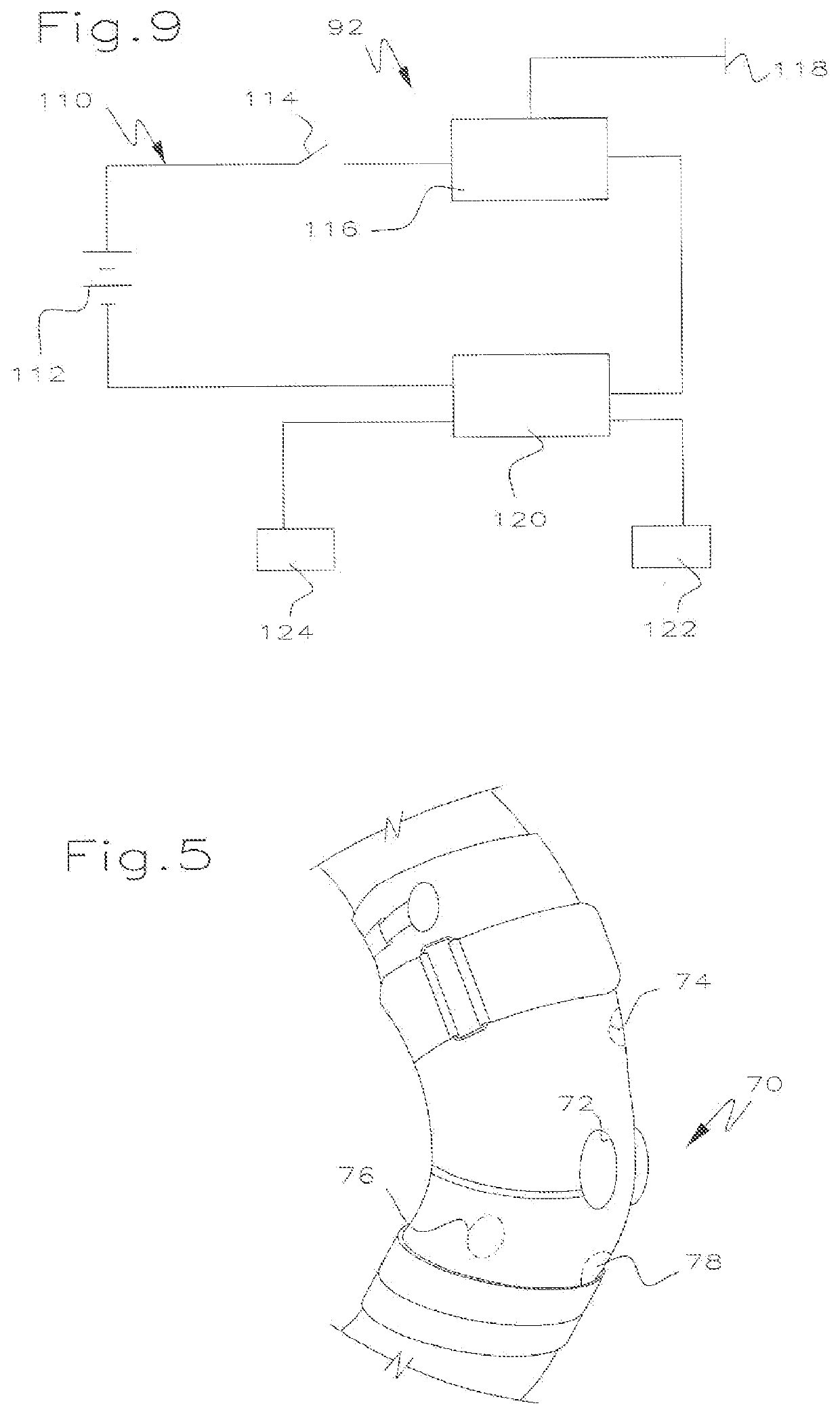Interferential treatment with modified beat frequency
a technology of interferential treatment and beat frequency, applied in the field of therapeutic approaches, can solve the problems of complicated selection of electrode pattern and beat frequency, interferential treatment consists of applying beats or pulses, etc., and achieves the effect of longer treatments
- Summary
- Abstract
- Description
- Claims
- Application Information
AI Technical Summary
Benefits of technology
Problems solved by technology
Method used
Image
Examples
Embodiment Construction
[0026]Referring to FIG. 1, a patient 10 is hooked up to an electrical interferential therapy device 12 inside a housing 14. The electrical interferential therapy device 12 may include a more-or-less conventional treatment module 16 such as is commercially available from Alan Neuromedical Technologies LLC of The Woodlands, Tex. to which reference is made for a more complete description thereof.
[0027]A wide variety of parameters may be used to monitor the autonomic nervous system and thereby determine the effect of an interferential treatment on the patient. These parameters may include skin impedance or resistivity, peripheral skin temperature, pulse rate, blood pressure, iris pupil diameter, respiration rate, blood oxygen content or any other indicator of autonomic nervous system function as stated in U.S. Pat. No. 8,515,551. Measuring skin temperature has proven to be an advantageous selection because it is unambiguous, reliable and easy to determine by commercially available senso...
PUM
 Login to View More
Login to View More Abstract
Description
Claims
Application Information
 Login to View More
Login to View More - R&D
- Intellectual Property
- Life Sciences
- Materials
- Tech Scout
- Unparalleled Data Quality
- Higher Quality Content
- 60% Fewer Hallucinations
Browse by: Latest US Patents, China's latest patents, Technical Efficacy Thesaurus, Application Domain, Technology Topic, Popular Technical Reports.
© 2025 PatSnap. All rights reserved.Legal|Privacy policy|Modern Slavery Act Transparency Statement|Sitemap|About US| Contact US: help@patsnap.com



